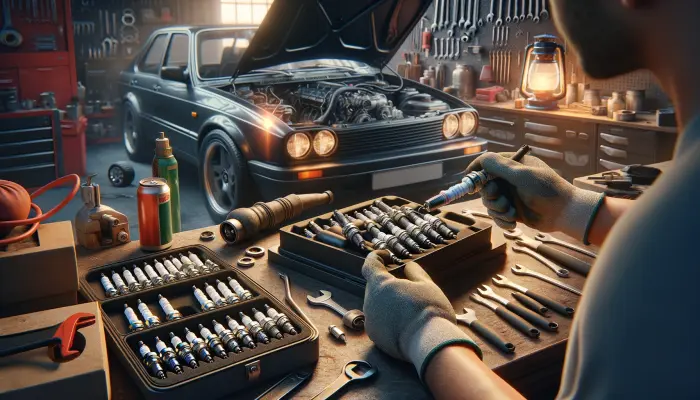Timely spark plug replacement plays a key role in ensuring your car's engine runs flawlessly. These small yet vital components are responsible for generating the spark needed to ignite the fuel-air mixture in the engine's cylinders. Neglecting to replace worn spark plugs can lead to a range of problems, including reduced power, increased fuel consumption, and even serious engine damage. Therefore, it's critically important to regularly check the condition of your spark plugs and replace them as needed.
Checking the Condition of Spark Plugs: How to Determine the Need for Replacement
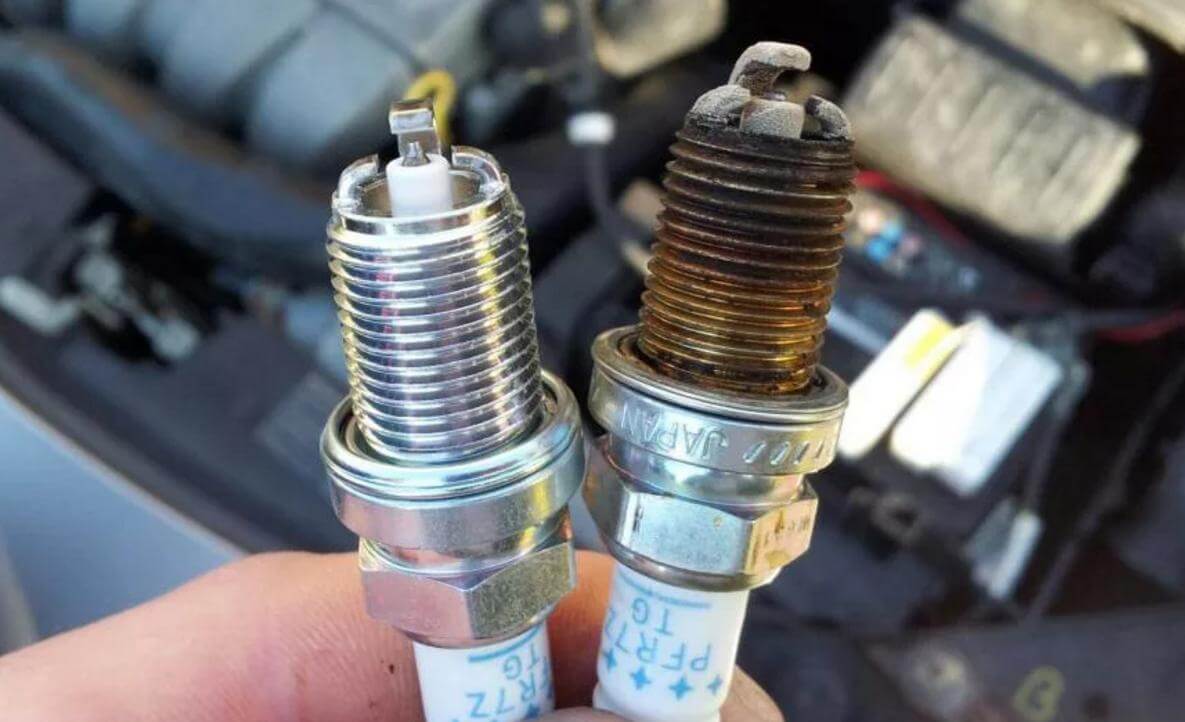
The importance of timely checking the condition of spark plugs cannot be ignored. Regular inspection and diagnostics will help identify wear or damage indicating the need for replacement.
There are several signs that it's time to replace your spark plugs:
Visual Inspection
When removing spark plugs, pay attention to the condition of their electrodes and insulator. Heavy soot buildup, electrode erosion, or cracking of the insulator, as well as excessive wear on the electrodes, are clear signs that replacement is needed.
Checking the Gap between Electrodes: Deviation from the recommended gap between electrodes can lead to malfunctions in the ignition system. Use a special tool to measure the gap and adjust it if necessary.
Mileage and Manufacturer Recommendations
Most car manufacturers recommend replacing spark plugs after a certain mileage, usually between 60,000 to 100,000 km. Follow these recommendations to ensure optimal engine performance.
Fault Codes and Instrument Readings
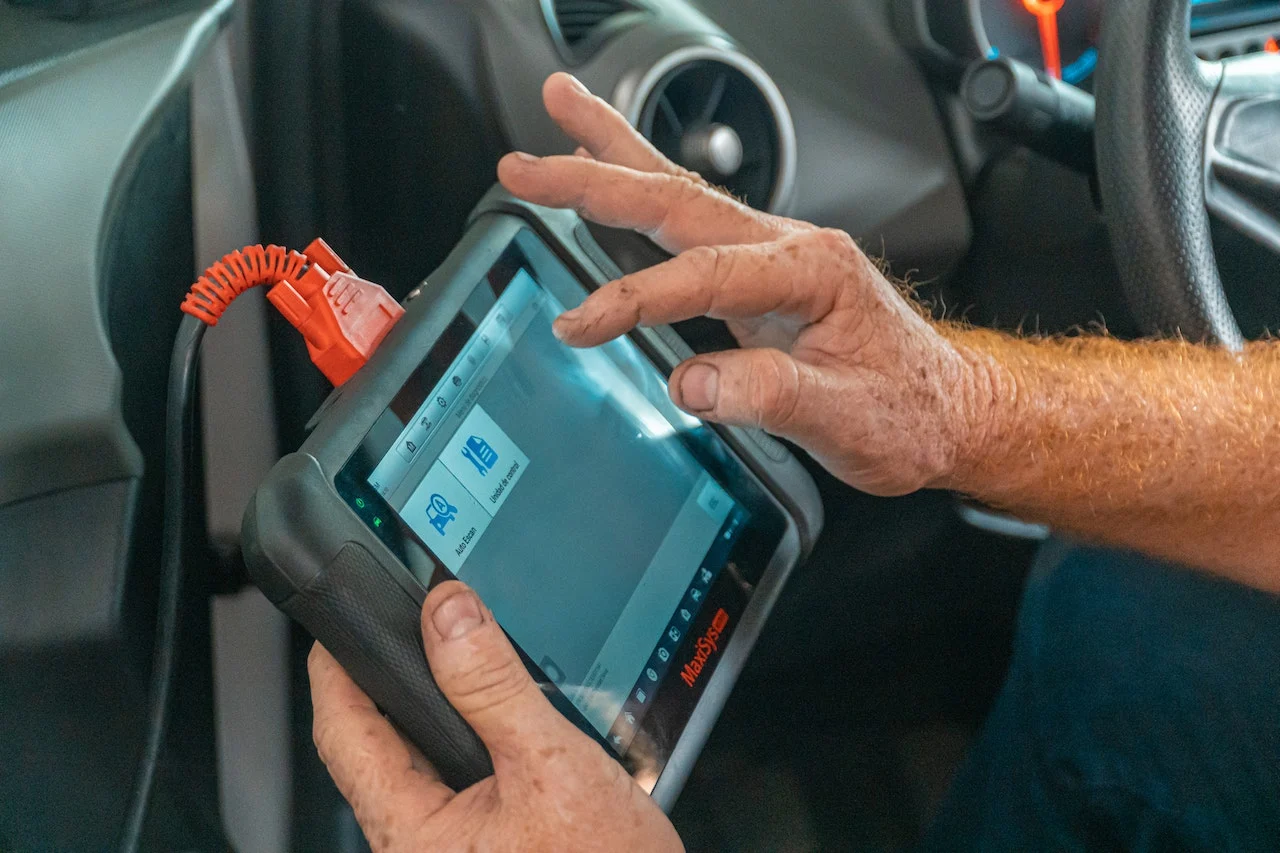
If the onboard computer issues fault codes related to the ignition system, or you notice a decrease in power, increased fuel consumption, or unstable engine operation, the cause may lie in worn spark plugs.
Checking the spark plug gap with a special gauge is also a good indicator of the need for replacement. If the gap significantly differs from the recommended values, the spark plugs should be replaced.
Don't ignore these signals indicating that your spark plugs require attention. Timely replacement will avoid more serious engine problems and ensure its reliable and economical operation. Regular checks and diagnostics are key to extending the lifespan of your car's critical components.
Preparing for Replacement
Preparing for spark plug replacement involves several important steps. First and foremost, it is necessary to purchase a new set of spark plugs that match your car's specifications. Using unsuitable spark plugs can negatively impact the performance and lifespan of the engine.
Different Types of Spark Plugs
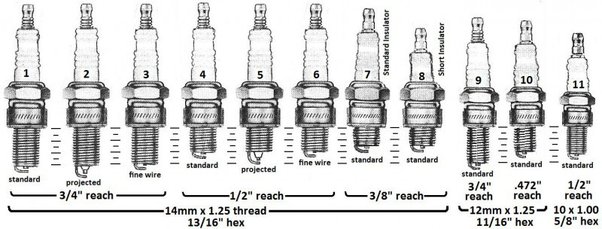
Before delving into the signs of wear on spark plugs, it is worth briefly reviewing the main types of spark plugs available on the market. Traditional copper spark plugs have been the standard for many decades, but in recent years manufacturers have been offering more modern and durable options:
- Platinum Spark Plugs - feature platinum coating on the electrodes, enhancing their resistance to erosion and soot buildup. They typically last longer than standard copper ones.
- Iridium Spark Plugs - contain iridium, one of the hardest metals, ensuring superior electrode wear resistance. Their lifespan is even higher than that of platinum plugs.
- Spark Plugs with Precious Metal Alloy - combine the advantages of various precious metals, such as platinum and iridium, providing excellent characteristics and long service life.
When choosing the type of spark plugs, it is important to follow the car manufacturer's recommendations to ensure optimal performance and longevity.
Determining the Type of Spark Plugs Needed
To determine which type of spark plugs are needed for your car, refer to the owner's manual or consult a qualified specialist. Car manufacturers carefully select plugs that provide optimal engine performance under specific conditions. Using the recommended plugs will avoid ignition problems and ensure proper performance.
Recommended Tools List
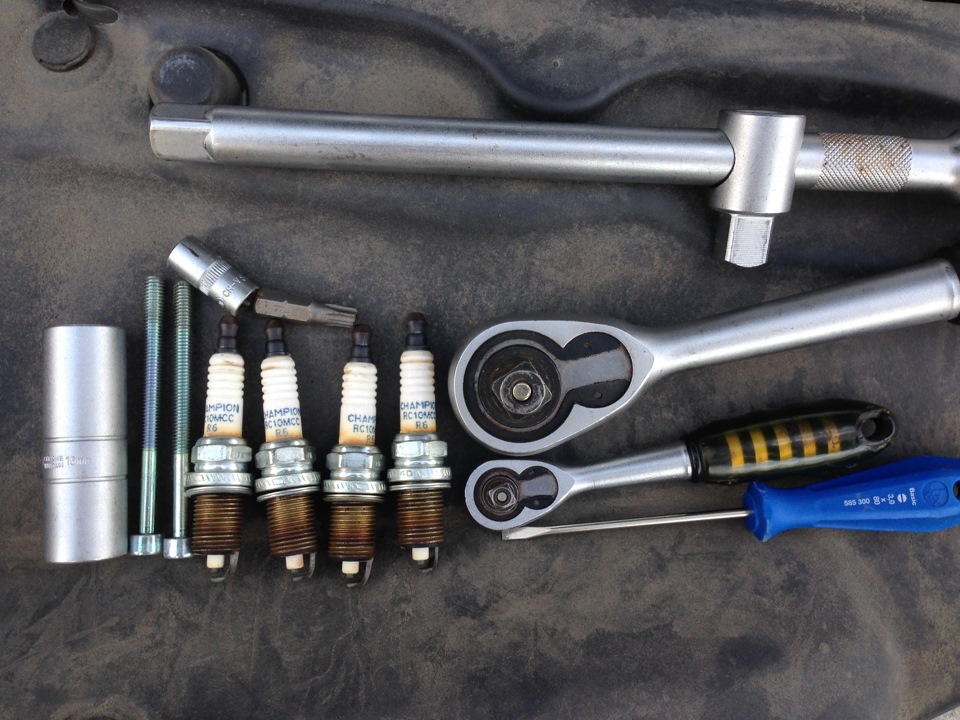
The following set of tools and materials will be needed for successful spark plug replacement:
Spark plug wrench or a set of spark plug wrenches of the appropriate size Anti-seize lubricant for spark plug threads (optional) Clean rags or paper towels Device for adjusting the electrode gap (if required)
You might also need a small flashlight for better visibility in hard-to-reach areas of the engine. Special spark plug wrenches with rubber inserts can help prevent damage to the ceramic insulators of the spark plugs.
Spark Plug Replacement Process
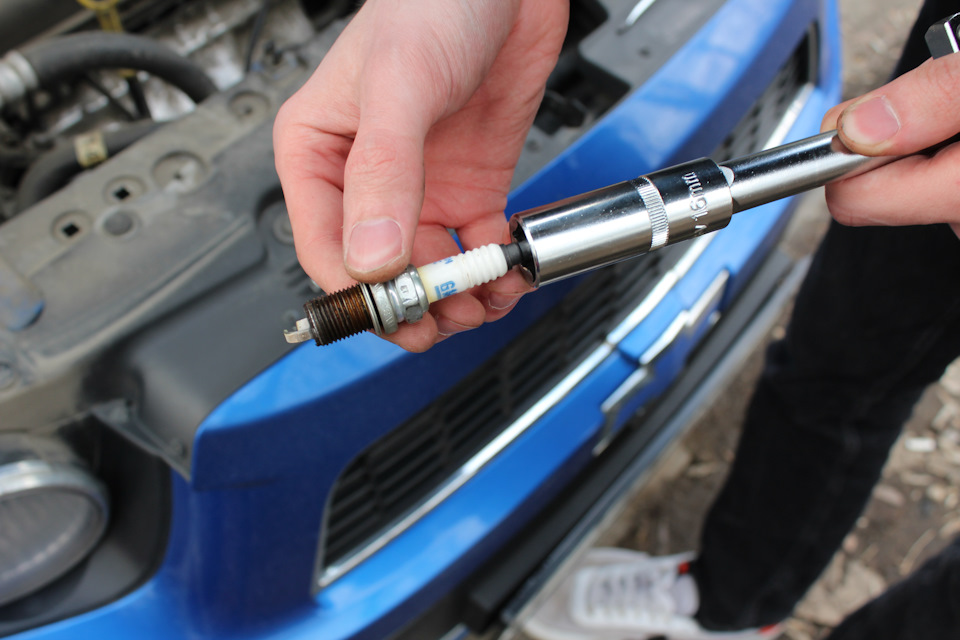
Once all the necessary tools and materials are prepared, you can start the process of replacing the spark plugs. It is recommended to follow the step-by-step instructions provided in your car's owner's manual, as the order of steps may slightly vary depending on the model.
The general process of replacing spark plugs usually includes the following steps:
Ensuring access to the spark plugs, which may require removing certain engine components or body parts. Carefully disconnecting the wires from the old spark plugs in the recommended order. Using a spark plug wrench to unscrew the old spark plugs. Thoroughly cleaning the spark plug wells from soot and foreign particles. Installing new spark plugs, preliminarily adjusting the gap between the electrodes as required by the manufacturer (if necessary). Tightening the spark plugs with the recommended torque using the spark plug wrench. Connecting the wires to the new spark plugs in the correct order.
It is important to follow all instructions and recommendations of the manufacturer to ensure proper installation of spark plugs and to prevent their premature wear or damage.
Post-Replacement Maintenance
After successful replacement of the spark plugs, a series of actions are required to ensure proper engine operation.
Leak Check
Before starting the engine after replacing the spark plugs, it is important to perform a thorough visual inspection for leaks in the ignition system. Ensure that all wires and components are properly installed and securely fastened.
Test Drive and Monitoring Indicators
After starting the engine, it is recommended to take a short test drive. During the drive, pay close attention to the indicators on the onboard computer or dashboard, such as engine RPM, fuel consumption, and fault codes. If all parameters are normal and the engine runs smoothly without jolts, then the spark plug replacement was successful.
Conclusion
Regular spark plug replacement is an important part of car maintenance. Timely replacement of worn spark plugs ensures optimal engine performance, reduces fuel consumption, and prevents more serious breakdowns. By following the step-by-step guide and manufacturer recommendations provided in this article, you can perform the spark plug replacement yourself, saving time and money. Do not neglect this important procedure, and your car will continue to provide reliable and efficient performance for many years to come.
FAQ
Q: Can I replace just one spark plug if the others look fine?
A: It is not recommended to replace only one spark plug. Doing so can cause differences in cylinder operation and lead to uneven engine performance. It's better to replace spark plugs as a set.
Q: Is it safe to use cheaper alternatives instead of the original spark plugs from the manufacturer?
A: Using non-original or low-quality spark plugs can negatively affect engine performance. It is better to follow the manufacturer's recommendations regarding the type and specifications of spark plugs for your model.
Q: How often should ignition system wires be replaced?
A: Manufacturers typically recommend replacing the wires simultaneously with the spark plugs, as their wear rate is approximately the same. Replacing both wires and plugs as a set will ensure optimal ignition system operation.
Q: Can incorrect spark plug installation damage the engine?
A: Yes, improper installation of spark plugs can lead to serious engine damage. It is important to strictly follow installation instructions, torque specifications, and the correct order of wire connections.
